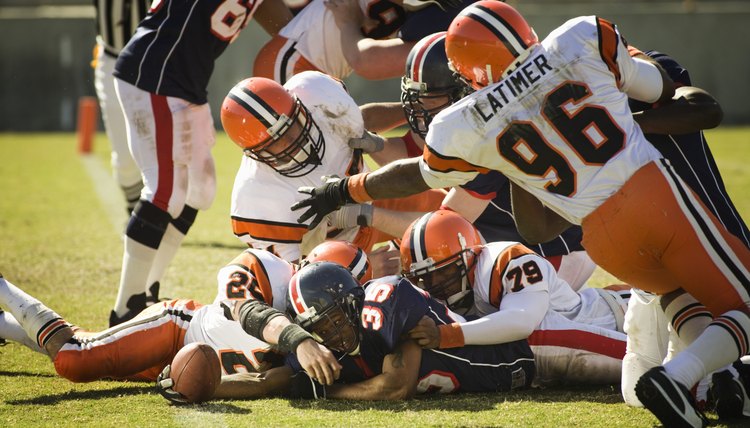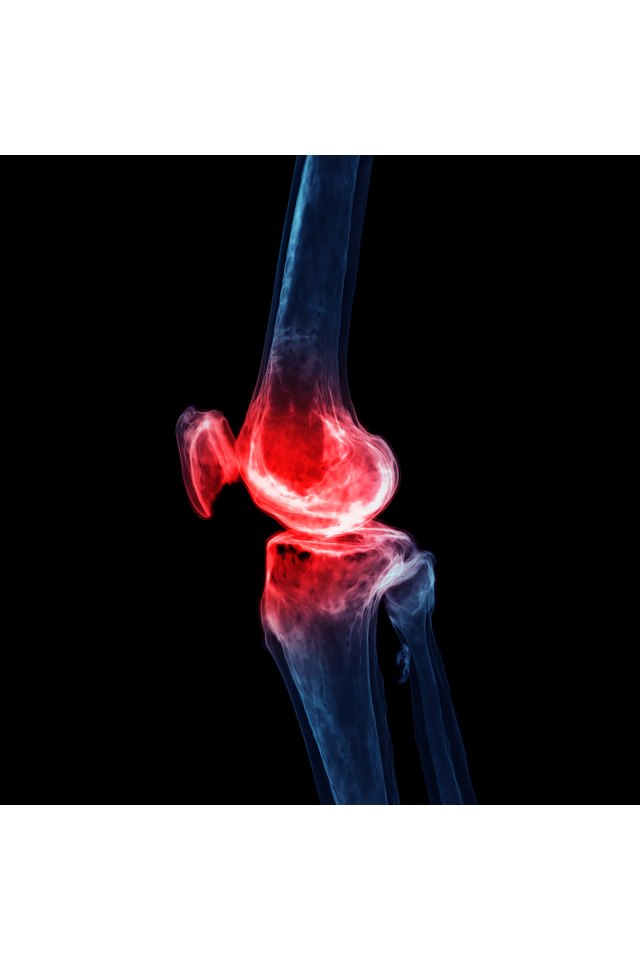What does fact checked mean?
At SportsRec, we strive to deliver objective content that is accurate and up-to-date. Our team periodically reviews articles in order to ensure content quality. The sources cited below consist of evidence from peer-reviewed journals, prominent medical organizations, academic associations, and government data.
The information contained on this site is for informational purposes only, and should not be used as a substitute for the advice of a professional health care provider. Please check with the appropriate physician regarding health questions and concerns. Although we strive to deliver accurate and up-to-date information, no guarantee to that effect is made.
Long Term Effects of Playing Football

American football is a brutally physical contact sport, with physical collisions between players a regular part of the game. Only recently has research conclusively shown, with some help from the courts, that playing football for a long period of time often leads to a greater risk of serious head and bodily injuries along with other long-term effects. These long-term health problems have made members of the general population and has led to many neuroscience innovations in football to decrease the risk factor.
Head Injuries

Fuse/Fuse/Getty Images
In the course of a regular game of tackle football, players undergo multiple collisions involving their heads. The exact number and severity of these collisions varies on playing position and other factors, but getting a concussion is an ongoing risk. A concussion is a traumatic brain injury, or tbi, caused by a head to head impact or rapid deceleration of the brain. This causes cognitive impairment due to head trauma received during a concussion.
Football causing brain damage is no theory. In 2007, a United States Court of Appeals upheld a lower court’s 2005 ruling that long-time professional football center Mike Webster’s brain damage was caused by playing football. Such damage can be avoided if players have the proper amount of rest after a concussion, but many coaches and professional football players operate under a code of toughness. The result can be brain damage, with effects felt immediately in the form of dizziness, imbalance and head pain, as well as later in the form of balance issues, clinical depression, memory loss and more.
Psychological Residue
The number of blunt force injuries a football player accumulates throughout his career can lead to head and brain injuries that affect a player’s mental disposition. This can lead to an increased risk of brain diseases like Chronic Traumatic Encephalopathy, or CTE, Alzheimer’s Disease, Parkinson’s and other neurodegenerative diseases. The Journal of American Medical Association, or JAMA studied the brains of 202 deceased former football players and found that 177 had some form of CTE. This has led to many neurology and sports medicine professionals to sound alarm bells on football and its effects on brain health.
Mental health is also a big issue for former NFL players and those who played other forms of football like college football. This is because some of the physical damage to the brain can lead to depression. In some cases, such as that of former National Football League safety Andre Waters, depression leads to suicide. A 2007 study by Julian Bailes, et al. found that the risk of depression in retired players was twice as high in those who had suffered concussions. That number went up to three times the risk in former players who had suffered five concussions or more.
Wear and Tear

Fuse/Fuse/Getty Images
Like all professional athletes who play sports involving a large amount of physical contact, football players are at risk for injuries during and after their careers. The more a player strains their bodies playing, the more repercussions they face in their retirement. Flexing, pushing off, and making hard contact taxes your joints, ligaments and muscles. This can lead to immediate injuries like strained muscles and broken bones, as well as later complications like severe arthritis and joint pain for former athletes. This doesn’t just go for American football players as baseball players, basketball players, and more deal with wear and tear.
Obesity, Sleep Apnea, Diabetes and More

Fuse/Fuse/Getty Images
Football players -- who may be upwards of 300 pounds --often have to deal with the side effects of their weight long after their final football season concludes. Sleep apnea, for example, affects football players both mid- and post-career. The best way to treat sleep apnea is to lose weight, but players who are encouraged to remain large for their position, or players who cannot lose weight once they retire, are at serious risk for sleep apnea. A 2003 New England Journal of Medicine study found that 14 percent of the active players in the NFL had sleep apnea. Similarly, the consequences of obesity, such as diabetes, may affect heavier football players long after they retire. These players are also at risk for cardiovascular disease, high cholesterol and high blood pressure. A combination of these health care crises can even be deadly.
References
- University of North Carolina at Chapel Hill: Department of Exercise and Sports Medicine
- University of Washington; Long-Term Effects of Concussions in Football Players; Ellen Kuwana; May 2004
- Harvard Health Blog; Concussions in Football; Michael Craig Miller, M.D.; August 2010
- Journal of the American Medical Association”; Concussion in Sports; Sharon Parmet; 2003
Writer Bio
Audrey Tramel has been writing articles for a variety of academic and professional journals since 2006. She focuses on health issues affecting adolescents, particularly obesity. With an M.D. and a Master of Public Health, Tramel works as a medical doctor specializing in primary care.
